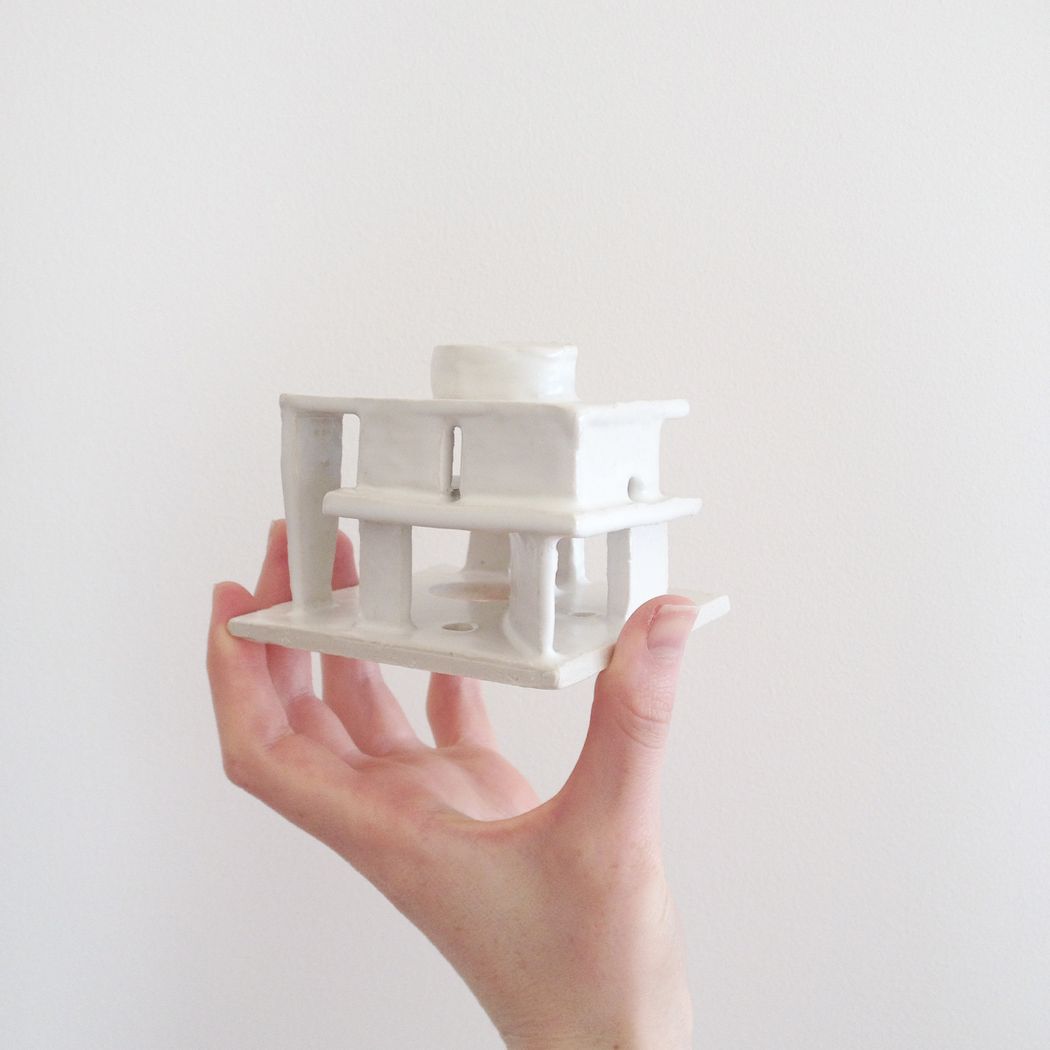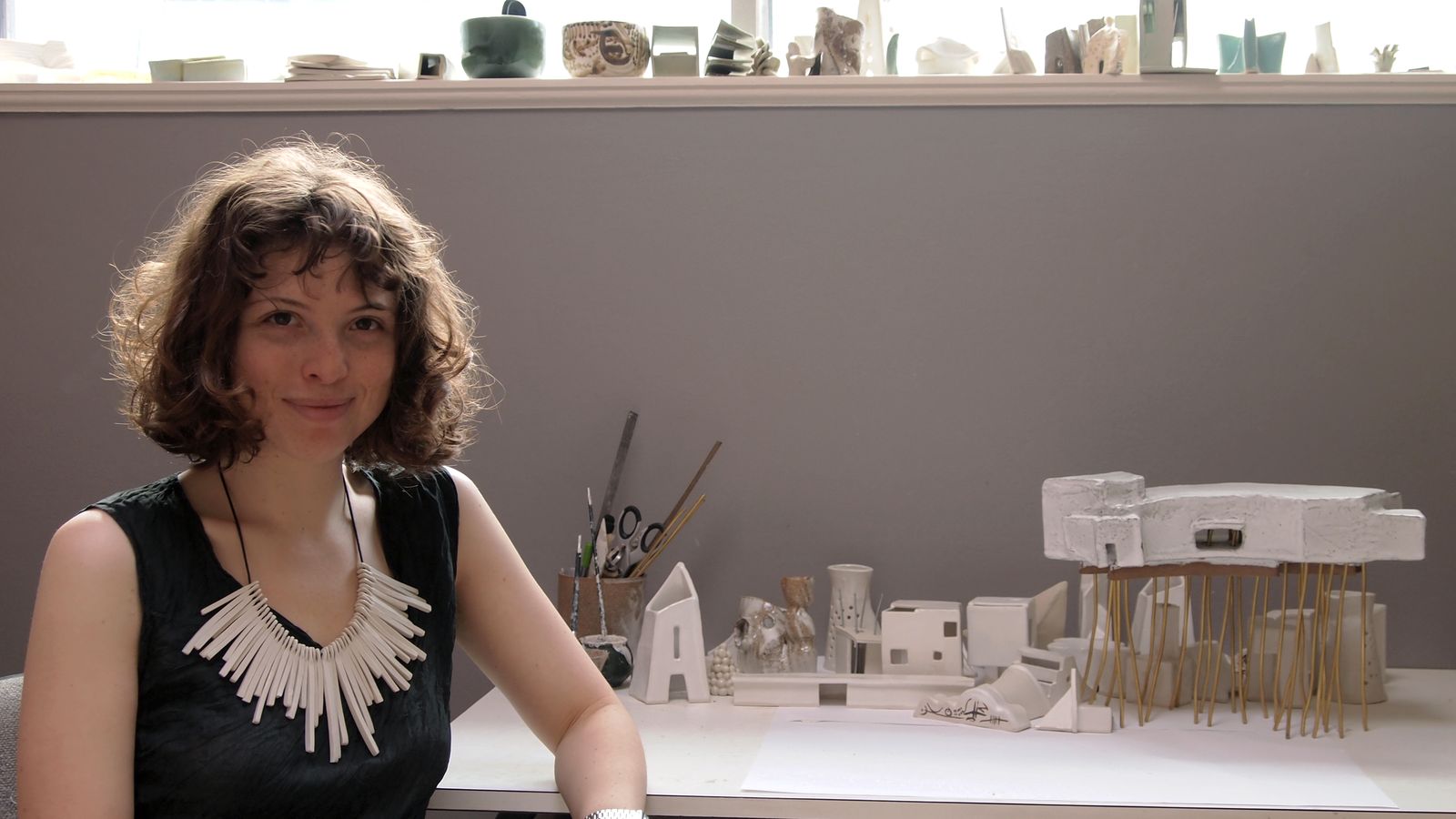Read an interview with Natalie Rosin, who is at the intersection of clay and architecture. As an emerging artist and architecture graduate, her work freely explores form and space through clay. Unlike the traditional model making materials of balsa wood and cardboard, Natalie experiments with clay to explore design possibilities bringing an element of surprise to her work.
QUESTIONNAIRE FOR INTERSECTIONS - NATALIE ROSIN
How would you describe the type of work you make?
I would describe my work as being sculptural architectural models. At times playful, almost anthropomorphic, imaginary environments and scaled spaces.
What inspires your creative process and/or influences your approach to making work?
Borrowing from my formal architectural training, I tend to approach the creation of these architectural sculptures in a similar way to building a scale model of a building design. Setting out the dimensions, 3d modelling the form, borrowing from plans, sections and elevations. The approach can also be widely different, diverging during the making process where the clay begins to take on a mind of it’s own. In this sense I could say I am strongly influenced by the physical properties of clay, the way it bonds, dries, vitrifies and absorbs glaze.
What do you like most about working with clay - what attracted you to the medium?
Clay has a gestural, malleable appeal to me. It is very different to the traditional model making materials such as cardboard and balsa wood. Clay has an unpredictable quality I’ve always been fascinated with. How can I use this to my advantage? is a question on my mind. You’re always working with the clay, not against it, asking what it wants to do. Louis Kahn, an influential modernist architect, once explained this concept in the following way:
You say to a brick, 'What do you want, brick?' And brick says to you, 'I like an arch.' And you say to brick, 'Look, I want one, too, but arches are expensive and I can use a concrete lintel.' And then you say: 'What do you think of that, brick?' Brick says: 'I like an arch.'
(If you haven’t mentioned it above already) There is a strong architectural feel to your work… does your ceramic process help you think about design solutions and spatial relationships in any particular way?
There are multiple ways to conjure a space, formulate an architectural concept or spacial idea. One way I’ve found is through modelling. No drawing or planning or tediously measuring. Clay is a fantastic medium for this approach. It’s weight, thickness and plasticity being more forgiving than other modelling materials. There is this concept that the methods, materials and tools we draw or model with can influence the aesthetics and design outcome of a building. In this same way clay can influence the formal qualities of design, it’s thickness and susceptibility to curves and warping integrated in the design approach.
When you make this work, do you have any particular audience in mind or are you interested in how people to respond to your work?
The audience for my work always fascinates me, their range of interests and architectural appreciation is varied. Initially when I began modelling buildings with clay my primary audience was based within an architectural academic setting. Now I find people interested and purchasing these pieces may not necessarily be aware of the discourse associated with a particular building or architect. Rather they appreciate the form and aesthetics in a more pure, subconscious way. Similar to how we can all appreciate a space without having to spend time analysing and understanding exactly what formal principles have been applied to achieve the spacial experience.
You work in a group studio. Does this have any influence on your work?
When I work among others in the studio, it’s always very valuable. Everyone freely exchanges advice when facing a particular problem or offers encouragement. You can always learn from others and exchange ideas to motivate one another.
Is there anything else you would like to add?
The upcoming residency opportunity will afford me the time to develop a more considered and refined approach to the different phases of my practice. It will allow added time for experimentation and a deeper dedication to ceramics.
Interview by Cath Fogarty, Curator Clay Intersections
Watch a video about Natalie Rosin
Read more about Clay Intersections
Image credit: Stiled #3, 2016. Photo credit: image courtesy of artist.


